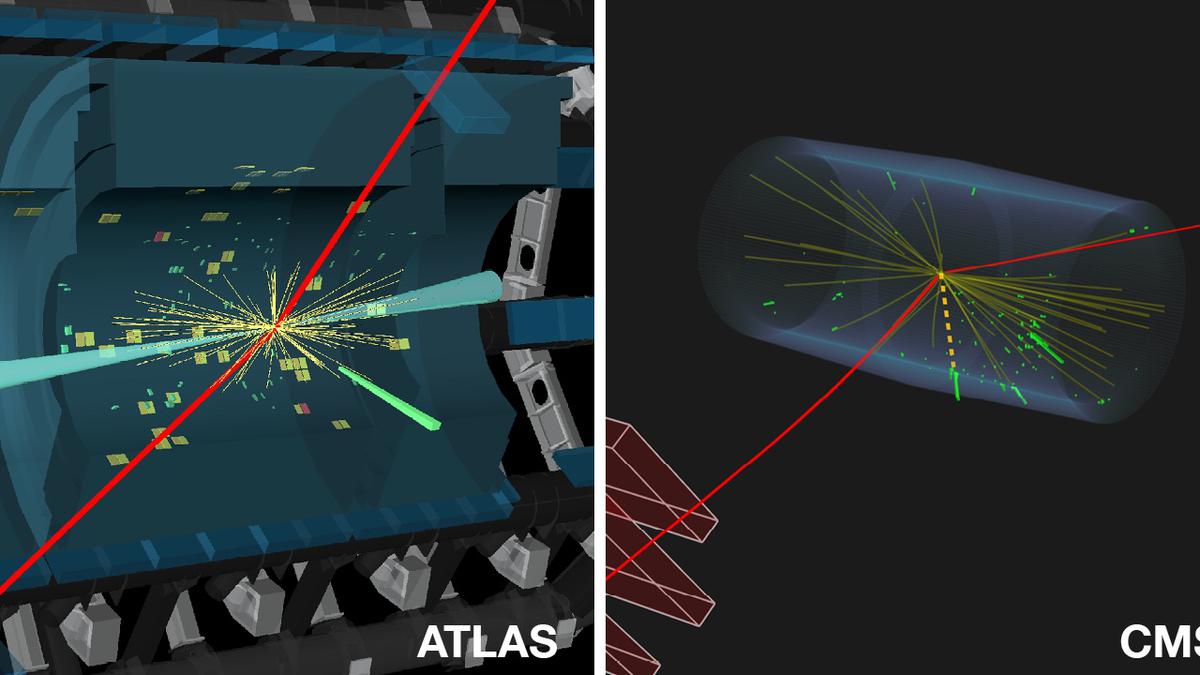
Explained | The decade-long search for a rare Higgs boson decay Premium
The Hindu
Since all the matter in the universe is made of fermionic particles, working out how strongly each fermion couples to Higgs bosons, together with understanding the properties of Higgs bosons themselves, can tell us a lot about the universe itself. The latter is why the new result, of the Higgs boson decaying to a Z boson and a photon, is notable.
Last week, physicists working with the Large Hadron Collider (LHC) particle-smasher at CERN, in Europe, reported that they had detected a Higgs boson decaying into a Z boson particle and a photon. This is a very rare decay process that tells us important things about the Higgs boson as well as about our universe.
The Higgs boson is a type of boson, a force-carrying subatomic particle. It carries the force that a particle experiences when it moves through an energy field, called the Higgs field, that is believed to be present throughout the universe. For example, when an electron interacts with the Higgs field, the effects it experiences are said to be due to its interaction with Higgs bosons.
An electron is a subatomic particle that has mass. How does this mass arise? How can we say that an electron has less mass than a proton, or that a photon has no mass at all? The answer lies with the Higgs boson. The stronger a particle’s interaction with the Higgs boson, the more mass it has. This is why electrons have a certain mass, protons have more of it, and neutrons have just a little bit more than protons, and so on. A Higgs boson can also interact with another Higgs boson: this is how we know that its mass is greater than that of protons or neutrons.
Since all the matter in the universe is made of these particles, working out how strongly each type couples to Higgs bosons, together with understanding the properties of Higgs bosons themselves, can tell us a lot about the universe itself. The latter is why the new result is notable.
Photons, the particles of light, have no mass because they don’t interact with Higgs bosons. So a question should arise: how did a Higgs boson decay to a Z boson and a photon if it doesn’t interact with photons? This is a good question whose answer lies in spacetime.
According to quantum field theory, which is the theory physicists use to study these interactions, space at the subatomic level is not empty. It is filled with virtual particles, which are particles that quickly pop in and out of existence. They can’t be detected directly, but according to physicists their effects sometimes linger.
The LHC creates a Higgs boson by accelerating billions of highly energetic protons into a head-on collision, releasing a tremendous amount of energy that condenses into different particles. When a Higgs boson is created in this hot soup, it has a fleeting interaction with virtual particles that creates a Z boson and a photon.

 Run 3 Space | Play Space Running Game
Run 3 Space | Play Space Running Game
 Traffic Jam 3D | Online Racing Game
Traffic Jam 3D | Online Racing Game
 Duck Hunt | Play Old Classic Game
Duck Hunt | Play Old Classic Game

















